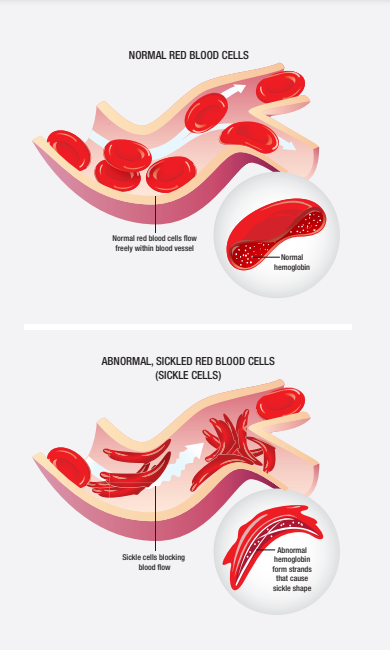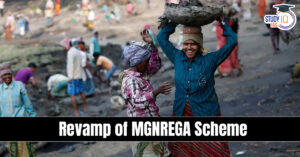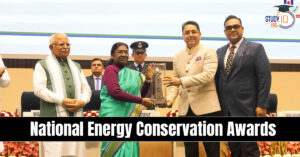Table of Contents
Colombo Process
Context: For the first time since its establishment in 2003, India has assumed the chairmanship of the Colombo Process.
About the Colombo Process
- Nature: The Colombo Process is a Regional Consultative Process.
- Purpose: It offers a vital platform for discussions on managing overseas employment and contractual labour from Asian countries of origin.
- Functionality: It acts as a venue for sharing best practices in managing overseas employment.
- Objectives:
- To exchange experiences, lessons, and effective practices in labour migration management.
- To address challenges encountered by migrants, their countries of origin, and destination countries, and to suggest feasible solutions for the well-being of overseas workers.
- To maximise the developmental benefits derived from organised overseas employment and to strengthen dialogues with destination countries.
- To evaluate and track the implementation of previously made recommendations and to determine additional steps needed.
- Membership:
- The Colombo Process includes 12 Member States from Asia, which are the origin countries for migrant workers.
- Member countries are Afghanistan, Bangladesh, China, Cambodia, India, Indonesia, Nepal, Pakistan, the Philippines, Sri Lanka, Thailand, and Vietnam.
- India has been part of the Colombo Process since it began in 2003.
- Operational Mechanics:
- The process is non-binding and operates on a consensus basis for decision-making.
- Coordination is managed through the Permanent Missions of Member States at the United Nations in Geneva.
- Governance is through Ministerial Consultations where participating countries’ Ministers discuss, adopt recommendations, and plan actions.
- Support and Administration: The International Organization for Migration (IOM) has been providing technical support to the Colombo Process from its start and functions as its Secretariat.
Diadromous Fish
Context: A research article in the Journal of Applied Ecology, issued by the British Ecological Society, indicates that 62% of Marine Protected Areas (MPAs) designated for migratory fish species, like diadromous fish, fail to cover their primary habitats.
About Diadromous Fish
- Diadromous fish are those species that migrate between saltwater and freshwater environments. This group includes both anadromous and catadromous species.
- Examples: Notable diadromous fish include the allis shad (Alosa alosa), twait shad (Alosa fallax), Mediterranean twaite shad (Alosa agone), and the European eel (Anguilla anguilla).
- Scientific Classification of Migrations:
- Anadromous Fish: Born in freshwater, migrate to the ocean as juveniles to mature, and then return to freshwater to spawn.
- Catadromous Fish: Born in saltwater, migrate to freshwater as juveniles to mature, and then return to the ocean to spawn.
- Amphidromous Fish: Born in freshwater or estuaries, drift to the ocean as larvae, and then return to freshwater to mature and spawn.
- Potamodromous Fish: Born in upstream freshwater locations, migrate downstream (within freshwater) as juveniles to mature, and return upstream to spawn.
- Threats: Diadromous fish face numerous threats from human activities. These include exposure to agricultural pollutants and runoff, habitat destruction, barriers to migration like dams, overfishing, accidental capture (bycatch), and the impacts of climate change.
Sickle Cell Disease
Context: The Indian Council of Medical Research (ICMR) seeks partners to collaborate on developing and commercialising a low dose or paediatric oral formulation of hydroxyurea, aimed at treating sickle cell disease in India.
Sickle Cell Disease in India
- SCD is an inherited haemoglobin disorder.
- Sickle cell disease (SCD) results from a mutation in haemoglobin (the protein responsible for carrying oxygen within red blood cells).
- This altered haemoglobin, known as haemoglobin S, causes red blood cells to become rigid and sticky when passing through tiny blood vessels.

- Red blood cells (RBCs) become crescent or sickle-shaped due to a genetic mutation.
- These RBCs block blood flow, depriving various body parts of essential oxygen which often leads to anaemia, organ damage, severe and episodic pain, and premature death.
- Symptoms and Signs: Early signs and symptoms of sickle cell disease (SCD) in infants typically appear around 5-6 months old and may include:
- Yellowing of the skin and whites of the eyes (jaundice)
- Fatigue or fussiness due to anaemia (low red blood cell count)
- Painful swelling of the hands and feet (dactylitis)
- Treatment: Lifelong condition requiring ongoing care.
- Bone marrow transplant: Traditionally the only cure.
- In 2023, The U.S. Food and Drug Administration approved two new therapies to treat the disease.
- One adds a therapeutic gene.
- Another modifies an existing gene.
- Other treatments: Focus on symptom reduction and life extension.
Current Status Of Sickle Cell Disease
- SCD Prevalence: India ranks third globally in SCD births (after Nigeria and the Democratic Republic of the Congo) , with regional studies indicating 15,000-25,000 SCD-affected births annually, predominantly in tribal populations.
- National Screening Data: Screening across various states found 8.75% positivity for SCD out of 1.13 crore people tested.
- Recognition as a Disability: SCD is listed as one of the 21 disabilities under the Rights of Persons with Disabilities Act 2016.
Heat Proofing the City
Context: Delhi’s recent heat peak of 52.9 degrees Celsius, although later attributed to a technical error, highlights a concerning trend.
Key Factors Contributing to Heat Stress
- Expansion of Built-Up Areas: The continuous growth of concrete surfaces in urban areas traps heat, exacerbating the problem.
- Example: Delhi’s built-up area increased from 31.4% in 2003 to 38.2% in 2022, while Bengaluru’s rose from 37.5% to 71.5% in the same period.
- Insufficient Green Spaces: Most urban development projects don’t meet the World Health Organisation’s recommendation of 9 sq m of green space per person, with the ideal being 50 sq m.
- Green cover varies from a mere 1.4 sq m per capita in Pune to 10.41 sq m in Delhi.
- The type of vegetation also matters, with unshaded areas recording land surface temperatures (LST) exceeding 40°C, compared to 29.7°C in densely foliage-covered areas.
- Disappearing Water Bodies: Between 1999 and 2021, Delhi lost half its surface water, with Pune and Jaipur losing 31.8% and 21.5%, respectively.
- Water bodies play a crucial role in urban cooling, potentially reducing ambient temperatures by 3-8 degrees.
- Other Heat Sources: Vehicle emissions, industrial processes, and air conditioning in buildings further contribute to the urban heat load, but policy action on these is unclear.
Equity Impacts and Vulnerability
- The urban heat island effect disproportionately affects the poor, who are more vulnerable due to underlying health conditions and lack of protection from heat exposure.
- The elderly and children are also particularly susceptible.
- Globally, heat-related deaths among the elderly are projected to rise by 370% by mid-century.
- Even if global warming is limited to 1.5°C, the frequency and intensity of heat extremes will continue to increase, amplified by urban growth.
Policy Responses and the Way Forward
- While some cities have initiated heat action plans, these largely focus on emergency responses during heat waves and lack legal and financial backing for comprehensive heat management.
- Existing regulatory instruments, like environmental impact assessments, urban development plans, and energy conservation building codes, remain underutilised.
A more holistic approach is needed, encompassing:
- Heat Proofing Cities: Prioritise year-round measures to reduce the city’s thermal load.
- Land-Use Changes: Expand green areas and water bodies for natural cooling.
- Heat Vulnerability Mapping: Identify vulnerable populations and areas.
- Data-Driven Action: Develop climate data platforms to inform interventions.
- Performance-Linked Funding: Align funding across sectors to enable plan implementation.
Examples, Case Studies and Data
- State Government Efforts to Tackle Air Pollution (GS 3): Haryana state government will soon roll out a Rs 10,000-crore project funded by the World Bank to address air pollution.
- Project Overview:
- 10-year comprehensive project to tackle air pollution in Haryana.
- Funded by the World Bank.
- Phased implementation, starting in the National Capital Region (NCR) districts.
- Key Focus Areas:
- Air Quality Monitoring Enhancement:
- Establishment of a state-of-the-art laboratory.
- Modernization of four existing laboratories.
- Formation of a dedicated project management unit.
- Stakeholder training in air quality management.
- Targeted Sectoral Interventions:
- Addressing pollution sources in transportation, industry, construction, road dust, biomass burning, and households.
- Cleaner Transportation Promotion:
- Electrification of public transport fleets.
- Incentives for private electric vehicle adoption, particularly three-wheelers and taxis.
- Increased incentives for scrapping older vehicles.
- Design of a model for automated testing stations (ATS) to monitor vehicle health.
- Air Quality Monitoring Enhancement:
- Project Overview:


 SHANTI Bill 2025: India Opens Nuclear Se...
SHANTI Bill 2025: India Opens Nuclear Se...
 Revamp of MGNREGA Scheme 2025
Revamp of MGNREGA Scheme 2025
 National Energy Conservation Awards 2025
National Energy Conservation Awards 2025

























